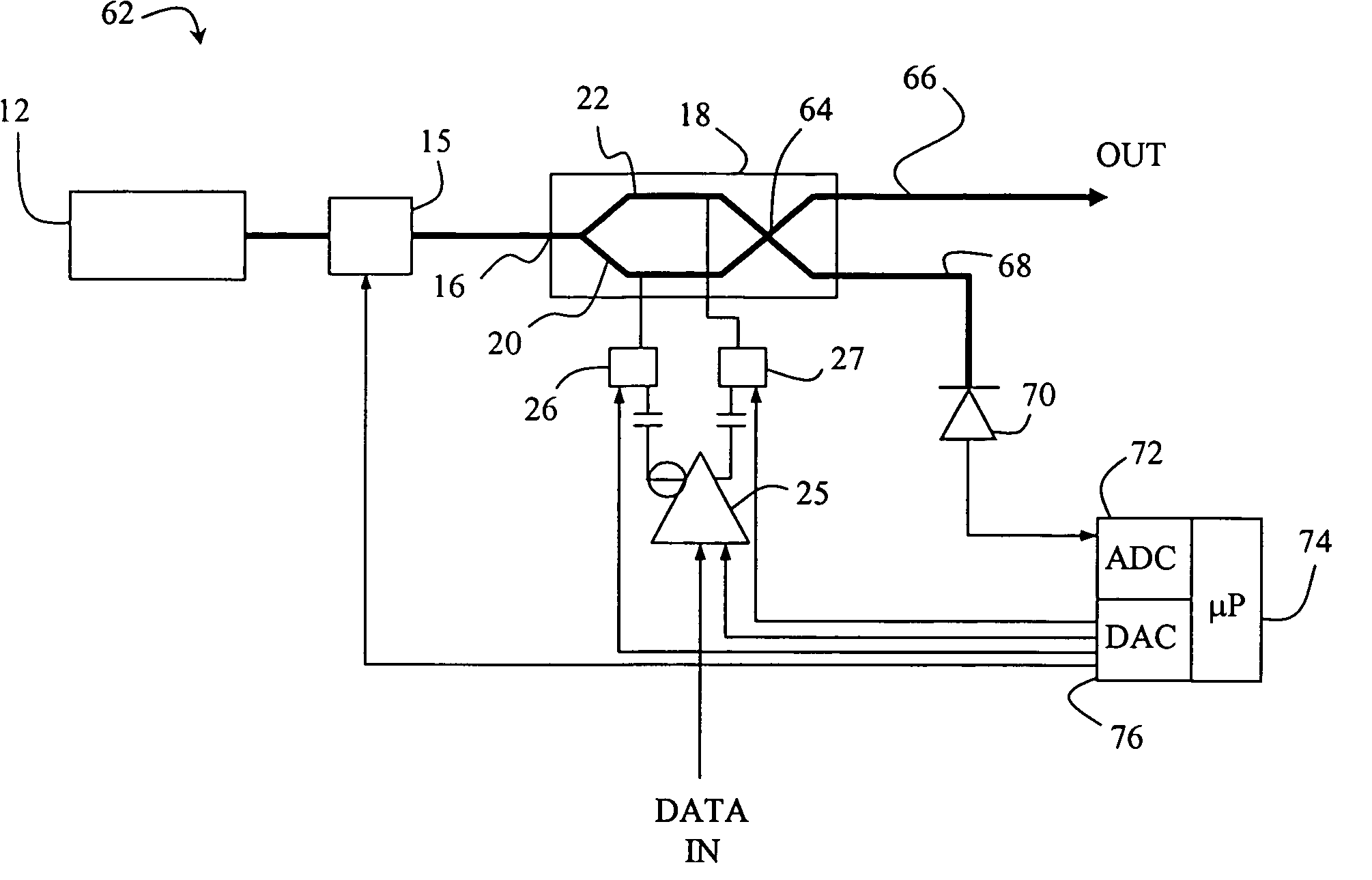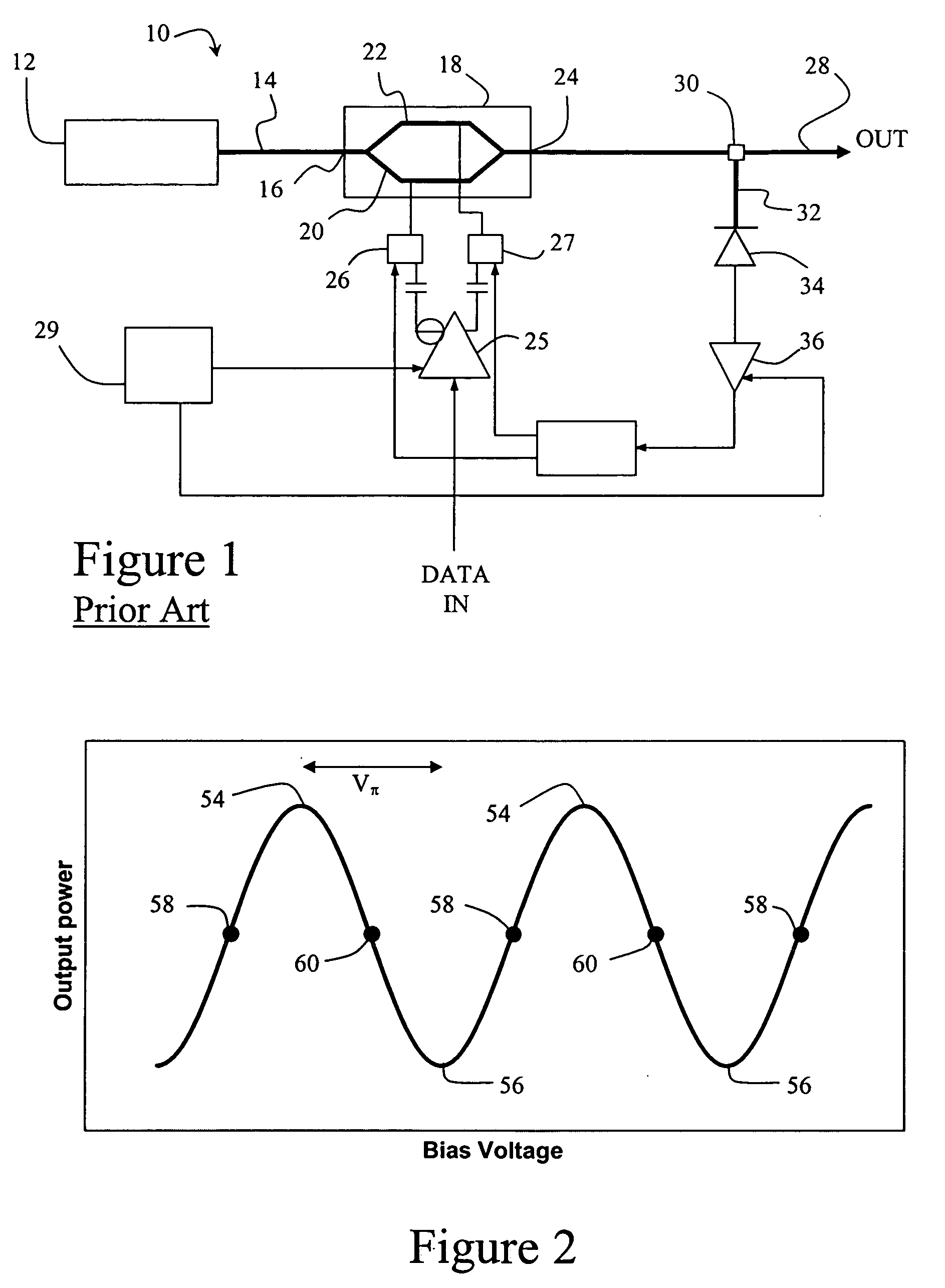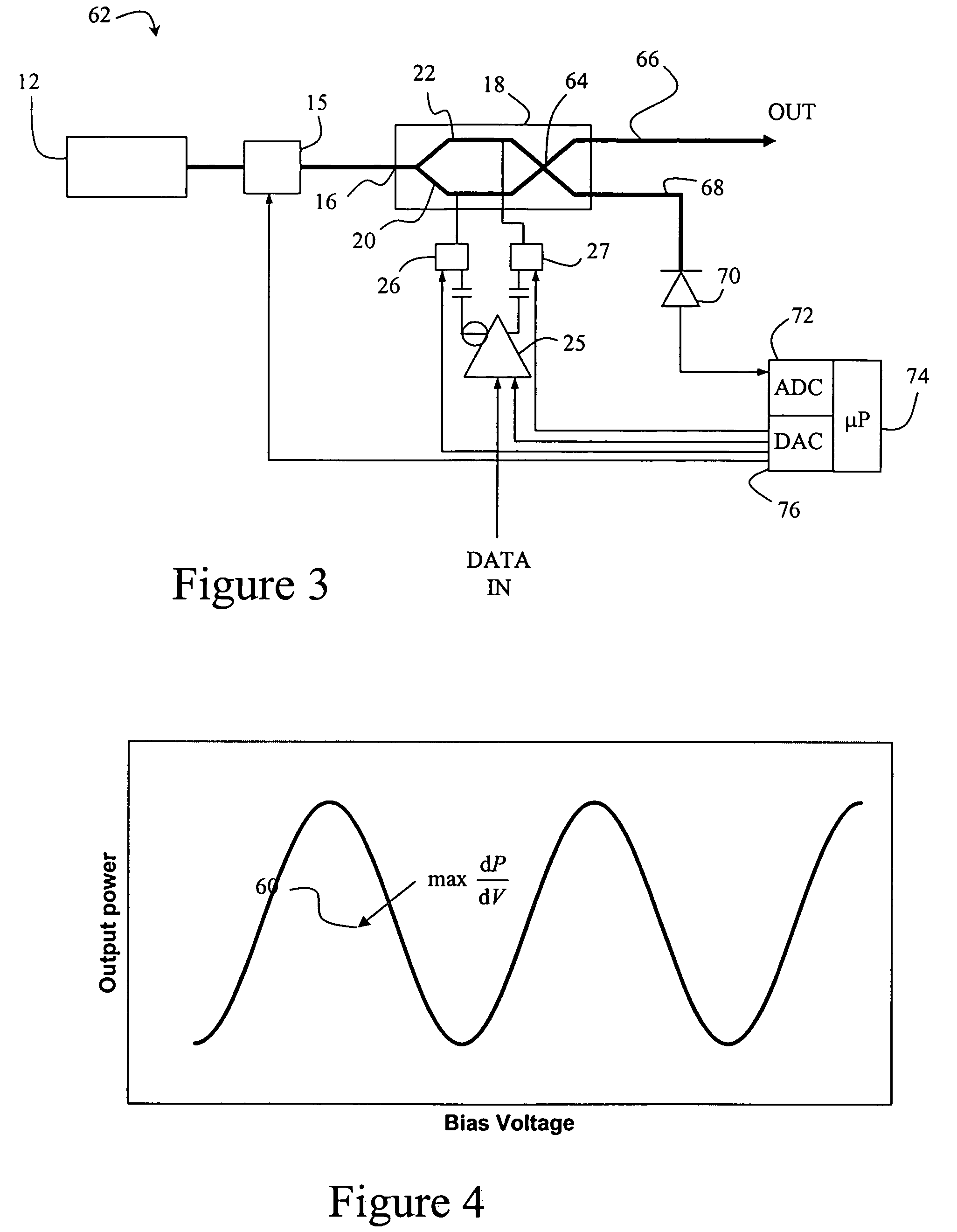Automatic bias control for an optical modulator
an optical modulator and automatic technology, applied in the direction of optical elements, instruments, optical waveguide light guides, etc., can solve the problems of constant readjustment, operating point drift, optical signal interference, etc., and achieve the effect of no loss of transmitted ligh
- Summary
- Abstract
- Description
- Claims
- Application Information
AI Technical Summary
Benefits of technology
Problems solved by technology
Method used
Image
Examples
Embodiment Construction
[0046]FIG. 2 is a graph showing how the optical power output of a Mach-Zehnder modulator depends on the relative bias voltage between the arms. It is clear from the figure that, as the bias voltage is increased, the optical power increases and decreases in a periodic manner. The sine curve shown in FIG. 2 has a plurality of peaks 54 and a plurality of troughs 56. Bias points 58 are constituted by positive inflection points in the rising portions of the curve between adjacent troughs 56 and peaks 54, whereas bias points 60 are similarly constituted by negative inflection points between adjacent peaks 54 and troughs 56. The bias points 58, 60 have voltage values approximately half way between those of the peaks 54 and troughs 56, and are the points Vπ / 2 referred to above.
[0047]FIG. 3 is a simplified block diagram of a modulator system 62 in accordance with the present invention. Components similar to those of FIG. 1 are represented by the same reference numerals. A laser 12 feeds a c...
PUM
| Property | Measurement | Unit |
|---|---|---|
| frequency | aaaaa | aaaaa |
| frequency | aaaaa | aaaaa |
| frequency | aaaaa | aaaaa |
Abstract
Description
Claims
Application Information
 Login to View More
Login to View More - R&D
- Intellectual Property
- Life Sciences
- Materials
- Tech Scout
- Unparalleled Data Quality
- Higher Quality Content
- 60% Fewer Hallucinations
Browse by: Latest US Patents, China's latest patents, Technical Efficacy Thesaurus, Application Domain, Technology Topic, Popular Technical Reports.
© 2025 PatSnap. All rights reserved.Legal|Privacy policy|Modern Slavery Act Transparency Statement|Sitemap|About US| Contact US: help@patsnap.com



